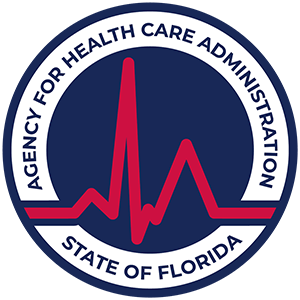Alcohol and Violence
Unveiling the connection between alcohol and violence. Explore the impacts, risks, and prevention strategies. Alcohol and violence: a sobering reality.
Alcohol and Violence
Alcohol consumption has long been associated with an increased risk of violence and aggression. Understanding the effects of alcohol on the body, including the dangers of alcohol overdose and the impacts of blood alcohol concentration (BAC), is crucial in recognizing and addressing the relationship between alcohol and violence.
Understanding Alcohol Overdose
Alcohol overdose occurs when an individual consumes an excessive amount of alcohol, overwhelming the body's ability to metabolize it. Teenagers and young adults who engage in binge drinking and high-intensity drinking are particularly at risk for alcohol overdose, as they may rapidly increase their blood alcohol concentration (BAC) (NIAAA). Symptoms of alcohol overdose can range from mental confusion and dulled responses to seizures, trouble breathing, and even death.
To prevent alcohol overdose and its potentially life-threatening consequences, it is essential to consume alcohol in moderation and be aware of personal limits. If someone suspects alcohol overdose, it is crucial to seek immediate medical attention.
Impacts of Blood Alcohol Concentration
As blood alcohol concentration (BAC) increases, so does the effect of alcohol on the body. Even small increases in BAC can lead to a decrease in motor coordination, clouded judgment, and increased vulnerability to acts of violence (NIAAA). The impairment caused by alcohol can have a profound impact on an individual's behavior and ability to make rational decisions.
It is important to note that the effects of alcohol on behavior can vary depending on factors such as tolerance, body weight, and individual differences. However, it is well-established that alcohol can increase the likelihood of aggressive behavior and violence, particularly in individuals prone to aggressive behaviors.
To mitigate the risk of alcohol-related violence, it is crucial to promote responsible drinking habits and educate individuals about the dangers of excessive alcohol consumption. Public health initiatives and effective prevention strategies play a vital role in addressing alcohol-related harms and reducing the incidence of alcohol-related violence. For more information on preventing alcohol-related harms, visit our article on preventing alcohol-related harms.
By understanding the relationship between alcohol, alcohol overdose, and blood alcohol concentration, individuals can make informed decisions about their alcohol consumption and reduce the potential for violence and aggression.
Alcohol-Related Risks
As alcohol consumption increases, so do the associated risks. Understanding these risks is crucial in order to make informed decisions about drinking habits. Two significant risks of alcohol consumption include alcohol and drug interactions, as well as impairments resulting from excessive drinking.
Alcohol and Drug Interactions
Alcohol use, particularly when combined with other substances, can have dangerous consequences. When alcohol is consumed alongside opioids or sedative hypnotics, the risk of an overdose significantly increases. The combined effects of alcohol and these drugs intensify their individual effects, potentially leading to an overdose, even with moderate amounts of alcohol (NIAAA). It is important to exercise caution and avoid mixing alcohol with medications or illicit drugs.
Impairments from Excessive Drinking
Excessive drinking can result in impairments that affect various aspects of an individual's physical and cognitive functioning. When someone drinks too much and too quickly, it can lead to significant impairments in motor coordination, decision-making, impulse control, and other functions. These impairments increase the risk of harm and can potentially result in an alcohol overdose (NIAAA).
Alcohol overdose can have serious consequences, including permanent brain damage or death. Symptoms of alcohol overdose may include mental confusion, difficulty remaining conscious, vomiting, seizures, trouble breathing, slow heart rate, clammy skin, dulled responses, and extremely low body temperature. It is essential to be mindful of the amount of alcohol consumed and to recognize the signs of alcohol overdose in oneself or others.
By understanding the risks associated with alcohol consumption, individuals can make informed decisions and take steps to protect their health and well-being. It is important to be aware of potential drug interactions and to avoid excessive drinking to minimize the risks of harm. If you or someone you know is struggling with alcohol-related issues, seeking support from medical professionals or addiction specialists can provide valuable guidance and assistance.
Domestic Violence and Alcohol
When examining the relationship between alcohol and violence, it is important to explore the specific connection between alcohol and domestic violence. This section will discuss the association between alcohol and domestic abuse, as well as the role of alcohol in violent crimes.
Association with Domestic Abuse
Research has consistently shown a strong link between alcohol and domestic violence. According to a study published in the NCBI, alcohol-related domestic violence is twice as likely to involve physical violence, including life-threatening injuries. In the United States, approximately 40% of reported domestic violence cases involve alcohol, and the intensity of violence is greater when the perpetrator is intoxicated compared to when they are not.
Alcohol can exacerbate existing tensions and conflicts within relationships, leading to an increased likelihood of domestic abuse. The disinhibiting effects of alcohol, coupled with the loss of emotional control, can intensify aggressive and violent behaviors. It is important to understand that alcohol does not cause domestic violence, but it can contribute to its occurrence and severity.
Alcohol's Role in Violent Crimes
Alcohol's involvement in violent crimes extends beyond domestic violence. It has been widely recognized as a major factor in various forms of violent victimization and criminal behavior. According to a study published in ScienceDirect, alcohol is believed to be involved in 35 to 40 percent of all violent victimizations and in 50 percent or more of selected violent crimes, including murder, rape, and family violence.
The disinhibiting effects of alcohol can reduce impulse control and increase the likelihood of engaging in aggressive or violent behavior. The impairment of cognitive functions, such as judgment and decision-making, can further contribute to the commission of violent crimes. Individuals who are prone to aggressive behaviors are more likely to commit impulsive violent acts, especially under the influence of alcohol.
It is important to note that alcohol does not directly cause violent behavior. However, its intoxicating effects can lower inhibitions, impair judgment, and increase the likelihood of aggression. Understanding the role of alcohol in violent crimes is crucial for developing effective prevention strategies and interventions.
To prevent alcohol-related harms and reduce the risk of violence, public health initiatives and education campaigns play a crucial role. By raising awareness about the link between alcohol and violence, promoting responsible drinking, and providing resources for individuals struggling with alcohol misuse, we can contribute to a safer and healthier society.
In the next section, we will explore the relationship between alcohol and aggression, delving into the precursors of aggression and the link between alcohol and aggressive behavior. Stay tuned for more insights.
Alcohol-Induced Aggression
Alcohol has been associated with various forms of aggression and violent behavior. Understanding the relationship between alcohol and aggression is crucial in addressing the risks and consequences of alcohol-related violence.
Aggression Precursors
Aggression serves as a precursor to violence, and individuals who are prone to aggressive behaviors are more likely to engage in impulsive violent acts, especially under the influence of alcohol. It is important to recognize that aggression can be classified into different categories, including impulsive, premeditated, and medically driven.
Several factors can contribute to the development of aggressive tendencies, such as underlying psychiatric comorbidities like personality disorders, mood disorders, and intermittent explosive disorders (NCBI). These factors, combined with the effects of alcohol, can heighten the risk of aggressive behavior.
Link Between Alcohol and Aggressive Behavior
Alcohol can accentuate or promote the mental state of individuals, amplifying their emotions and influencing their behavior. While some individuals may experience positive emotional outcomes such as gregariousness and warmth, others may exhibit negative emotions, including aggressive behavior (NCBI).
Studies have shown that alcohol consumption can lead to increased aggression in both men and women. Brain imaging studies have revealed changes in neurological activity during aggressive episodes, with higher activation of the amygdala and prefrontal cortex in men, particularly during emotional reactions.
It is important to note that the relationship between alcohol and aggression is complex and influenced by various factors. The effects of alcohol on aggression can be moderated by individual characteristics, environmental factors, and situational cues. Therefore, not everyone who consumes alcohol will exhibit aggressive behavior, but the risk may be elevated in certain circumstances.
Understanding the link between alcohol and aggression is crucial in addressing the issue of alcohol-related violence. By recognizing the factors that contribute to aggressive tendencies and the influence of alcohol on behavior, preventative measures can be implemented to reduce the risks associated with alcohol-induced aggression.
For more information on the relationship between alcohol and violent crimes, as well as alcohol-related criminal incidents, refer to the sections on Alcohol in Violent Crimes and Alcohol-Related Criminal Incidents.
Alcohol and Criminal Behavior
The relationship between alcohol and criminal behavior has been a topic of research and discussion for many years. Evidence suggests that alcohol is associated with a significant proportion of violent crimes and criminal incidents. In this section, we will explore the role of alcohol in violent crimes and its connection to criminal behavior.
Alcohol in Violent Crimes
Research indicates that alcohol is believed to be involved in 35 to 40 percent of all violent victimizations and in 50 percent or more of selected violent crimes, including murder, rape, and family violence (ScienceDirect). The economic costs of alcohol abuse and alcoholism were estimated to have reached $148 billion in 1992. These statistics highlight the significant impact of alcohol on criminal behavior.
Epidemiological reviews have found that a high percentage of offenders involved in violent crimes had consumed alcohol prior to their attacks. For example, as many as 85 percent of murderers, 60 percent of sexual offenders, 72 percent of robbers, and 57 percent of assailants (including family assault) had consumed alcohol before their crimes (ScienceDirect). However, it is important to note that these findings do not establish a causative relationship between alcohol and violence. They simply indicate a correlation between alcohol consumption and involvement in violent crimes.
Alcohol-Related Criminal Incidents
While it is challenging to determine the exact prevalence of alcohol intoxication during the commission of violent criminal acts, studies have shown that a significant percentage of individuals involved in violent crimes had consumed alcohol before their offenses. The specific rates vary depending on the study and the population being examined. Some studies have reported as many as 82 percent of assailants drinking before their crimes (ScienceDirect).
It is important to note that correlations between alcohol and criminal behavior do not imply causation. The relationship between alcohol and violence is complex, and other factors, such as individual characteristics and situational variables, can also contribute to violent incidents. However, the evidence suggests that alcohol plays a significant role in increasing the risk of violent behavior.
To address the issue of alcohol-related criminal behavior, various prevention strategies and public health initiatives have been implemented. These efforts aim to reduce alcohol-related harms and mitigate the risk factors associated with alcohol-related violence. By raising awareness, promoting responsible drinking habits, and providing support and resources for individuals struggling with alcohol addiction, it is possible to make a positive impact in preventing alcohol-related criminal incidents.
Understanding the association between alcohol and criminal behavior is essential for developing effective prevention strategies and interventions. By addressing the underlying factors contributing to alcohol-related violence, we can work towards creating safer communities and reducing the negative impact of alcohol on individuals and society as a whole.
Preventing Alcohol-Related Harms
Preventing alcohol-related harms is a crucial goal for public health organizations and communities. By implementing effective prevention strategies, we can mitigate the risks associated with alcohol consumption and reduce the incidence of alcohol-related violence. This section will explore public health initiatives and effective prevention strategies aimed at addressing these concerns.
Public Health Initiatives
The World Health Organization (WHO) recognizes the prevention of harmful alcohol use as a priority and advocates for evidence-based strategies that target the general population, vulnerable individuals, and those affected by alcohol-related issues. In the United States, public health initiatives focus on implementing policies that regulate alcohol-related behaviors and promoting primary prevention programs (NCBI).
One effective approach involves policies that restrict alcohol availability. For example, increasing alcohol prices, limiting the days of alcohol sales, and reducing the density of alcohol outlets have shown positive results in reducing alcohol-related harms. Studies have demonstrated that higher alcohol prices are associated with reductions in drinking frequency and vehicular fatalities. These policies aim to discourage excessive alcohol consumption by making it less accessible and affordable.
Public health initiatives also include educational campaigns that raise awareness about the risks of excessive alcohol consumption and promote responsible drinking practices. These campaigns aim to change societal attitudes and norms surrounding alcohol use, encouraging individuals to make informed choices about their alcohol consumption.
Effective Prevention Strategies
Alongside public health initiatives, there are several effective prevention strategies that can be implemented to address alcohol-related harms:
Sobriety Checkpoints: Sobriety checkpoints, where law enforcement agencies conduct random checks to identify and discourage individuals from driving under the influence of alcohol, have shown effectiveness in reducing alcohol-related car crashes. Studies have reported an approximate 20% reduction in such incidents as a result of sobriety checkpoints.
Server Intervention Training Programs: These programs educate servers of alcoholic beverages on responsible serving practices to prevent intoxication. Intensive training programs that involve face-to-face instruction and active management support have proven to be effective in reducing alcohol-related harms. By equipping servers with the knowledge and skills to identify and manage intoxicated individuals, the risk of serving alcohol to already intoxicated patrons can be minimized.
Implementing these prevention strategies requires collaboration between various stakeholders, including government agencies, law enforcement, healthcare providers, and community organizations. By adopting a multi-faceted approach, communities can work towards reducing alcohol-related harms and promoting safer environments for individuals affected by alcohol use.
For more information on alcohol addiction, types of alcoholics, and causes of alcoholism, be sure to check out our articles on types of alcoholics and causes of alcoholism. Additionally, if you're curious about the classification of alcohol as a drug, you can explore our article on what type of drug is alcohol?.














.svg)








